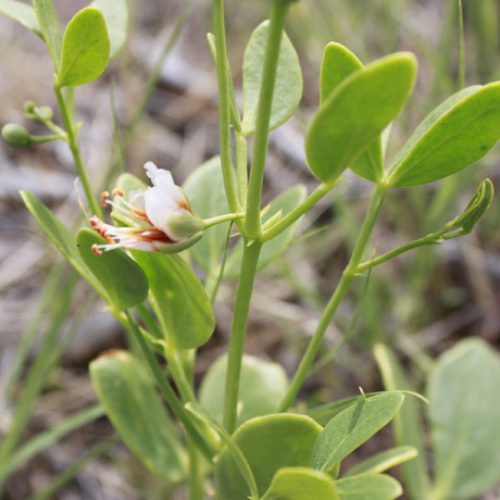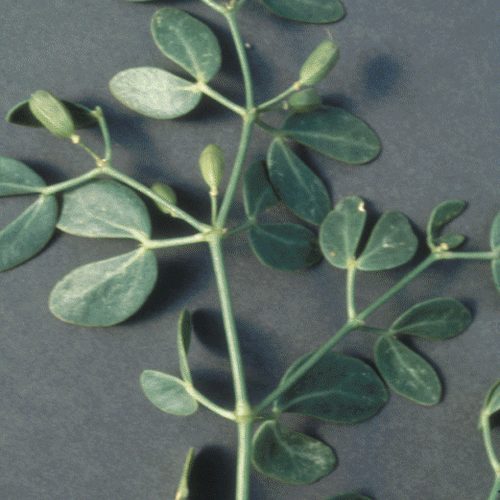Syrian Bean-Caper
Zygophyllum fabago

Family: Zygophyllaceae
Weed class: A
Year Listed: 1989
Native to: Asia and Eastern Europe
Is this Weed Toxic?:
not known to be
Legal listings:
This plant is also on the Washington State quarantine list. It is prohibited to transport, buy, sell, offer for sale, or distribute plants or plant parts of quarantined species into or within the state of Washington or to sell, offer for sale, or distribute seed packets of seed, flower seed blends, or wildflower mixes of quarantined species into or within the state of Washington. Please see WAC 16-752 for more information on the quarantine list. For questions about the quarantine list, contact the Washington State Department of Agriculture's Plant Services Program at (360) 902-1874 or email PlantServices@agr.wa.gov.
Why Is It a Noxious Weed?
Syrian bean-caper is a threat to agriculture and can form infestations that outcompete native plant species.
How would I identify it?
General Description
Syrian bean-caper is a succulent perennial, forming a compact multi-branched shrub that may reach three feet tall and spread three feet in diameter.
Flower Description
Flowers are single and are on short stalks. Each has five green sepals and five petals that are white to cream with salmon-colored markings. Ten orange stamens extend past the petals.
Leaf description
Leaves are opposite and composed of two leaflets. They are thick, leathery, fleshy and glabrous (smooth and hairless).
Stem description
Stems are branched, either growing along the ground or somewhat upright, and are hairless.
Fruit Seed Description
Seeds are in a 5-celled capsule that is oblong and hangs down on the plant.
Where does it grow?
Syrian bean-caper can be found in open, rocky areas and gravelly soils, including roadsides and disturbed areas. Please click here to see a county level distribution map of Syrian bean-caper in Washington.
How Does it Reproduce?
Syrian bean-caper reproduces by seed, rhizomes and root fragments.
How Do I Control It?
Mechanical Control
Small infestations of Syrian bean-caper can be hand pulled, making sure that the whole root is removed.
Herbicide Control
Herbicide control is difficult due to the leathery leaves. Please refer to the PNW Weed Management Handbook, or contact your county noxious weed coordinator.
For More Information
Invasive Plant Atlas information on Syrian beancaper
Invasive.org images of Syrian beancaper
California Invasive Plant Council information on Syrian beancaper









